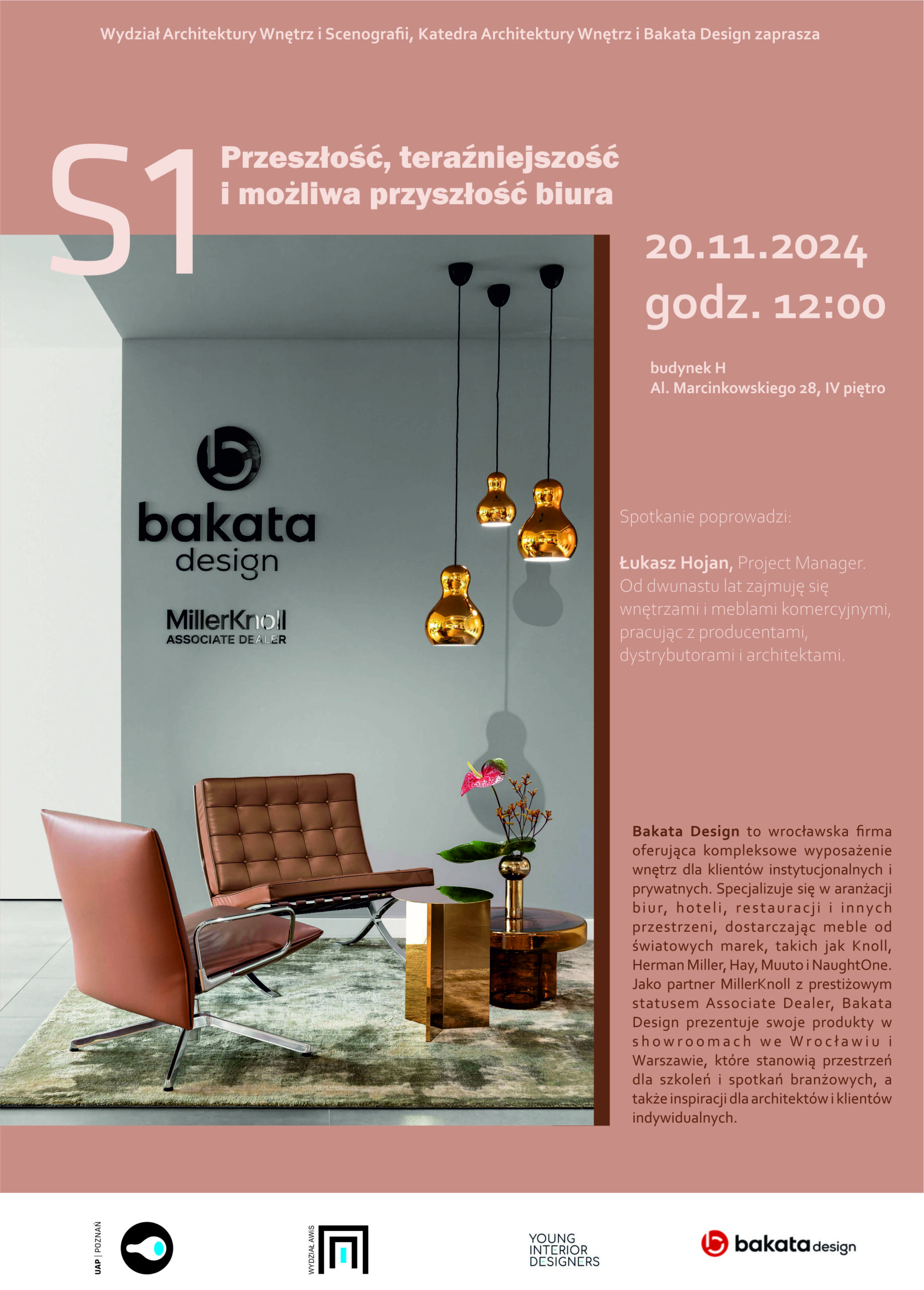S1 | Past, present and possible future of the office
Event organization: Magdalena Abakanowicz University of the Arts Poznan, Faculty of Interior Design and Stage Design, Department of Interior Design, Bakata Design.
November 20, 12:00, building H, 28 Marcinkowskiego Ave., floor IV.
Bakata Design is a Wrocław-based company offering comprehensive interior furnishings for institutional and private clients. It specializes in the arrangement of offices, hotels, restaurants and other spaces, providing furniture from global brands such as Knoll, Herman Miller, Hay, Muuto and NaughtOne. As a MillerKnoll partner with the prestigious Associate Dealer status, Bakata Design presents its products in showrooms in Wrocław and Warsaw, which provide space for training and industry meetings, as well as inspiration for architects and individual clients.
The meeting will be led by: Łukasz Hojan, Project Manager. I have been dealing with interiors and commercial furniture for twelve years, working with manufacturers, distributors and architects.
Meeting: Past, present and possible future of the office.
The aim of this meeting is to present to students the evolution of the office work space from the beginning of the 20th century to the present, taking into account the impact of the global pandemic on contemporary office design. The meeting is meant to bring understanding how historical changes in work organization have influenced current concepts of office space and what elements have a particular impact on the final effect.
The philosophy of organizing office space, developed by MillerKnoll in the post-pandemic era – Living Office and Design with Impact.
Agenda:
1. Introduction to the history of office spaces (15 minutes)
An overview of three main trends in office design since the beginning of the 20th century: Taylorist Office, Social Democratic Office, Networked Office.
The impact of these models on international approaches to space design work.
2. The Impact of the Pandemic and the MillerKnoll Philosophy (20 minutes)
The COVID-19 pandemic as a catalyst for changes in office design: adaptation to hybrid work models, use of technology and increased requirements regarding wellbeing.
“Living Office” philosophy and Design with Impact in a global context and their application in office design that promotes productivity and responsibility social.
3. Transformacje i nowe trendy (15 minut)
Analiza przypadków wyburzenia budynków biurowych, jako symbol zmiany paradygmatów w projektowaniu biurowym w Polsce.
Przedstawienie nowoczesnych realizacji biurowych i projektów mixed-use, które łączą
funkcje komercyjne, mieszkaniowe i rekreacyjne, wspierając dynamikę miast i różnorodność użytkowania.
Omówienie agile working – elastyczności i adaptacyjności przestrzeni biurowych w odpowiedzi na zmieniające się potrzeby użytkowników i wpływ tych trendów na polski
rynek nieruchomości.
3. Transformations and new trends (15 minutes)
Analysis of cases of demolition of office buildings as a symbol of a paradigm shift in office design in Poland.
Presentation of modern office projects and mixed-use projects that combine commercial, residential and recreational functions, supporting urban dynamics and diversity of uses.
Discussion of agile working – the flexibility and adaptability of office spaces in response to the changing needs of users and the impact of these trends on Polish real estate market.
4. Discussion and questions (30 minutes)
An open discussion with participants about how changes in office design can influence the future of work and what new challenges and opportunities lie ahead office designers.

- Author: o.petrenko
- Published on: 08.11.2024, 11:07
- Last edit: 08.11.2024, 11:07

